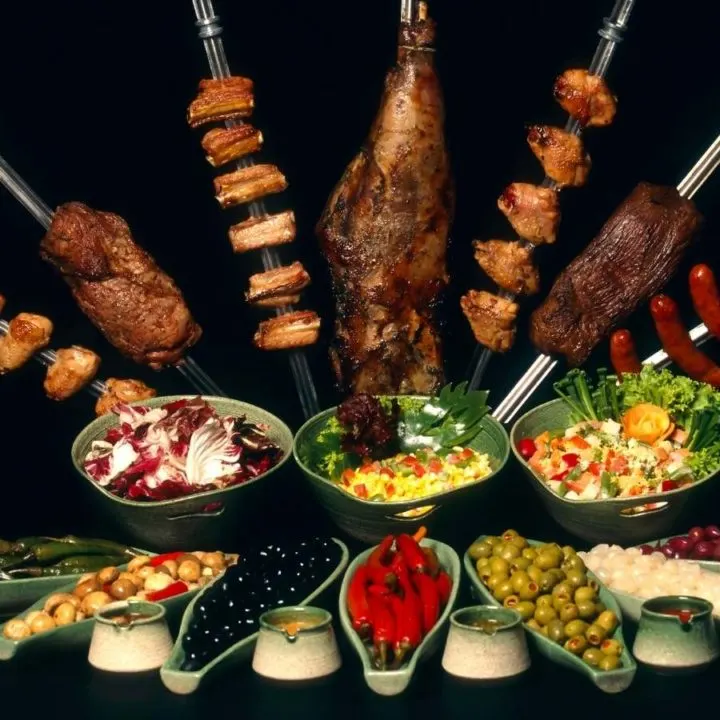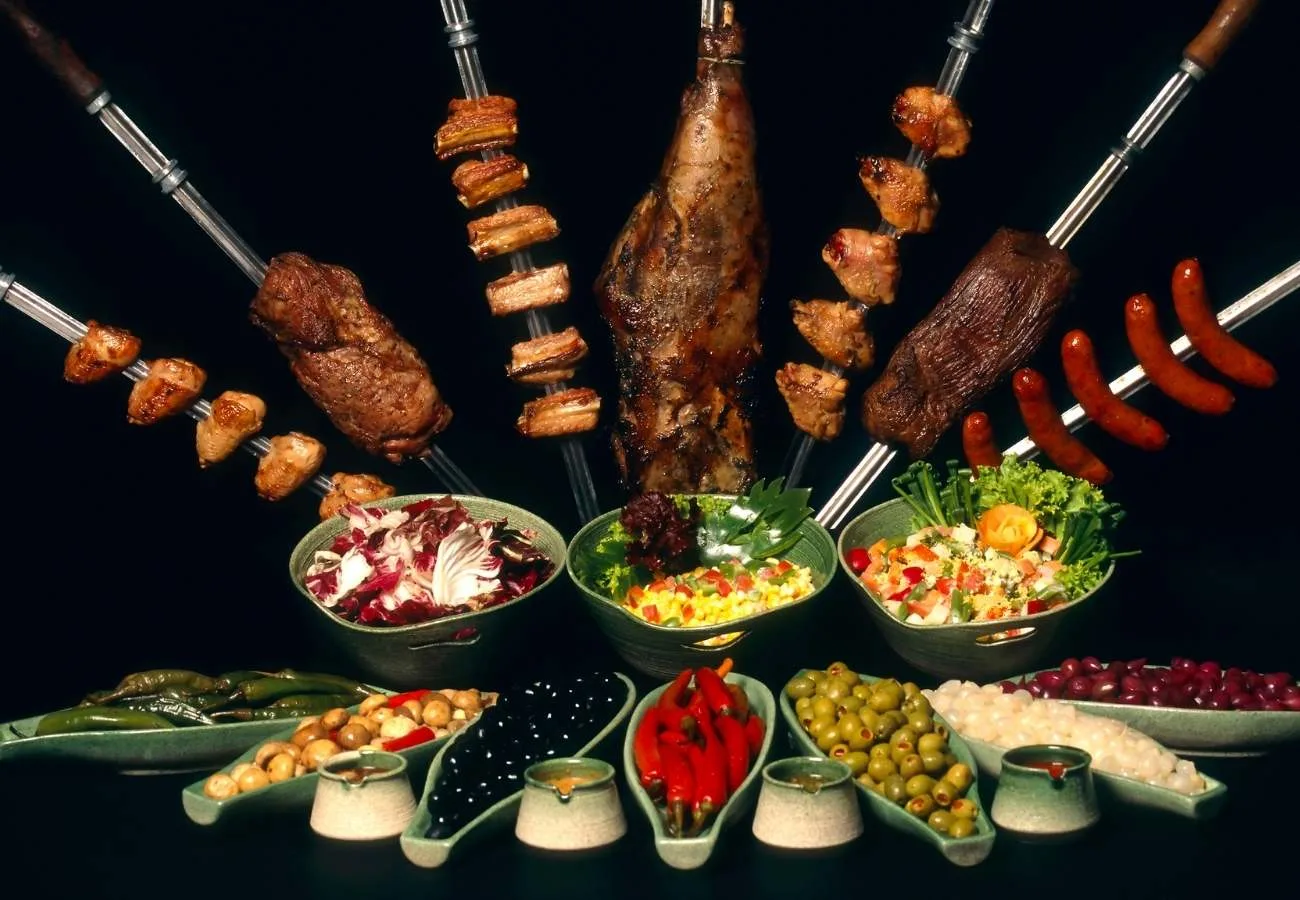Churrasco is a traditional Latin American barbecue technique where chops of beef, veal, lamb, pork and chicken are skewered and then grilled over a wood fire. It is a very popular dish in Brazil but is also a widely followed cooking method in many other countries, like Nicaragua, Puerto Rico, Argentina, Uruguay, Ecuador, Guatemala, Cuba and Chile.
The meat used to prepare churrasco in Brazil is often from the zebu, a breed of cattle that’s particularly common in churrasco as a cut of meat known as cupim. Foods that are served along with churrasco include farofa grains, rice, fried potatoes, potato salad, steamed greens, black beans, onions, fried bananas and many different chili-based sauces.
Origin & Cultural Significance
Churrasco is believed to have originated in the early 1800s when the Gauchos would unite and kindle a fire, placing large servings of meat on skewers and gradually grilling them.
Apart from being popular in Brazil, Churrasco is a widely followed cooking method in many other countries, however every country has their own preferred cuts of meat and serves them with different foods.

Traditional Churrasco Recipe
Ingredients
For the chicken:
- Bone-in, skin-on chicken thighs – 6
- Fresh lime juice - 1/2 cup
- Garlic (finely chopped) - 4 cloves
- Extra virgin olive oil - 1/4 cup
- Chopped fresh cilantro or flat-leaf parsley - 1/4 cup (optional)
- Coarse sea salt
- Freshly ground black pepper
For the beef:
- Picanha (fat trimmed to 1/2 inch) - 1 1/4 lb
For the kielbasa:
- Kielbasa sausage (cut into 3-inch lengths - 1 1/2 lb
For the vegetables:
- Baby bell peppers (mixed colours) - 12
- Medium onions (quartered lengthwise) - 2
- Extra virgin olive oil
- Salt
Instructions
- Begin by preparing the marinade for the chicken. Take a small mixing bowl, add garlic, cilantro or parsley, lime juice, olive oil, salt and pepper, and combine all the ingredients properly.
- Take a resealable plastic bag and place the chicken thighs inside. Pour the freshly prepared marinade over them. Seal the bag and place it in the refrigerator for about 1-2 hours. Make sure you turn it every now and then so that the entire meat is marinated evenly.
- Meanwhile, remove any silverskin from the picanha. Cut it crosswise into 2-inch-wide pieces. Now, season the sliced meat pieces on all sides using salt and pepper. Once done, make it into a “C” shape with the fat cap on the outside. Place the meat pieces on the skewer, making sure you skewer through the bottom and let the top sides retain their “C” shape.
- Next, place the kielbasa on one skewer and the vegetables on the other. Brush the onions with olive oil and season with salt and pepper.
- Take out the chicken thighs from the refrigerator. Remove the meat from the marinade and pat dry using paper towels. Place them on the skewer.
- If you have a Brazilian-style rotisserie, set it up as per the manufacturer’s instructions. Start a wood or charcoal fire and preheat to 400 degrees. Put the skewers in the sockets, beef and kielbasa on top and chicken, onions, and peppers on the bottom.
- Spit-roast until everything is thoroughly cooked. It may take you approximately 35 to 40 minutes for the chicken and onions, 45 minutes for the beef, and 30 minutes for the peppers and kielbasa. Keep in mind to keep rotating the skewers every 10 minutes so that all surfaces of every ingredient are well-cooked. Allow the chicken to cook completely (to an internal temperature of 165 degrees). Serve the beef crispy on the outside and medium-rare (130 to 135 degrees) on the inside.
- Serve the meats with the salsa and you're done!
Nutrition Information:
Yield: 8 Serving Size: 1Amount Per Serving: Calories: 807Total Fat: 58gSaturated Fat: 18gTrans Fat: 1gUnsaturated Fat: 38gCholesterol: 246mgSodium: 1289mgCarbohydrates: 21gFiber: 3gSugar: 8gProtein: 54g

